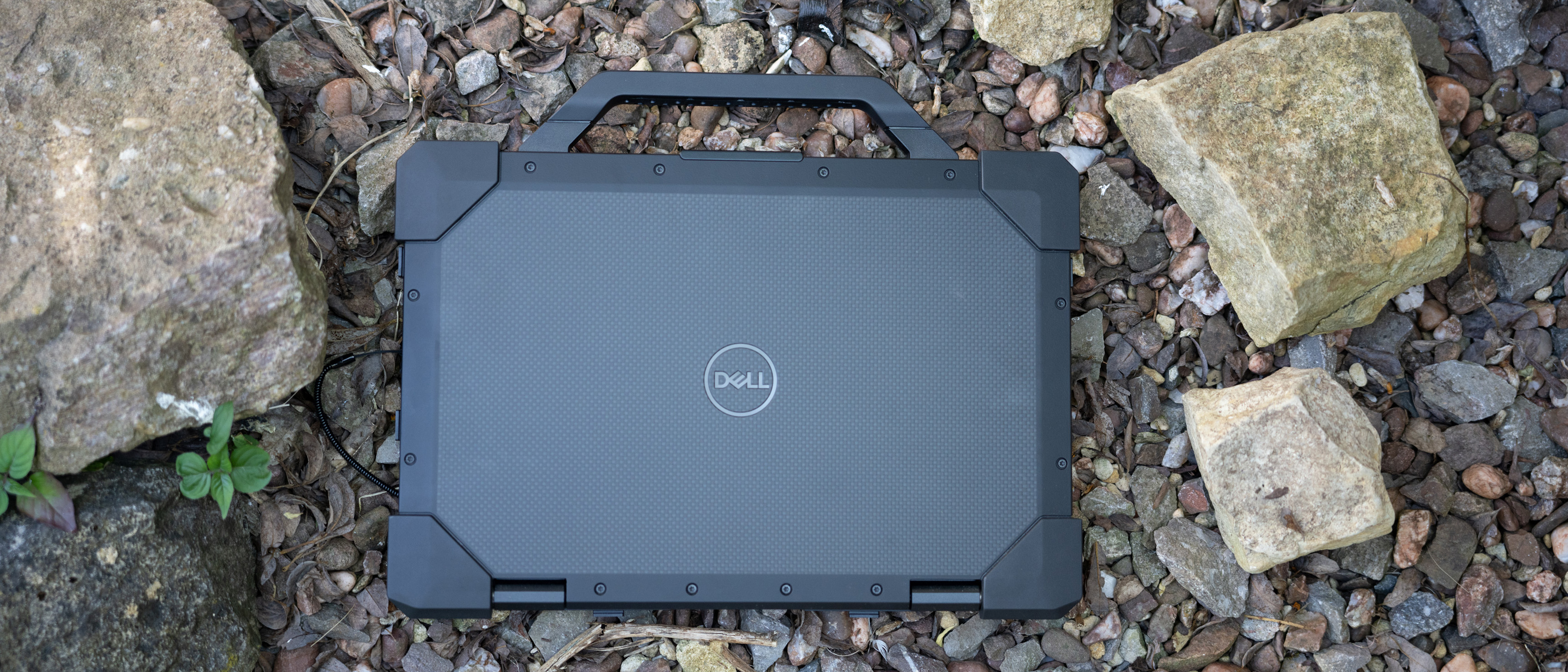Our Verdict
This isn’t a laptop for everybody, but for the few who really need i,t the 13-inch Dell Latitude 7330 Rugged Extreme will be the perfect tool for their situation. It’s armoured against impacts, has dust and water protection, and the removable battery and accessible SSD mean it has a degree of expandability and upgradability other laptops frequently don’t possess.
For
- Tough
- Decent performance
- Good connectivity
Against
- Expensive
- Niche product
- Trackpad lacks sensitivity
Why you can trust Creative Bloq
Part laptop, part flight case, the Dell Latitude 7330 Rugged Extreme is a PC that’s into snowboarding, rock climbing, and being bumped around in the back of a truck. It’s ideal for checking a spreadsheet while BASE jumping or creating drum and bass on a trip to the rainforest. Its integrated carrying handle and reinforced rubber armour may be its most obvious adaptations to the outdoor lifestyle, but a specialist computer such as this has plenty of other features too.
The laptop’s IP rating is 65, which means it’s extremely well sealed against dust and particulates and can survive low-pressure water jets from any direction, though it may not come back to life after being dropped in a lake unless you fish it out very quickly. If it's not the best 13-inch laptop out there, it's certainly the toughest.
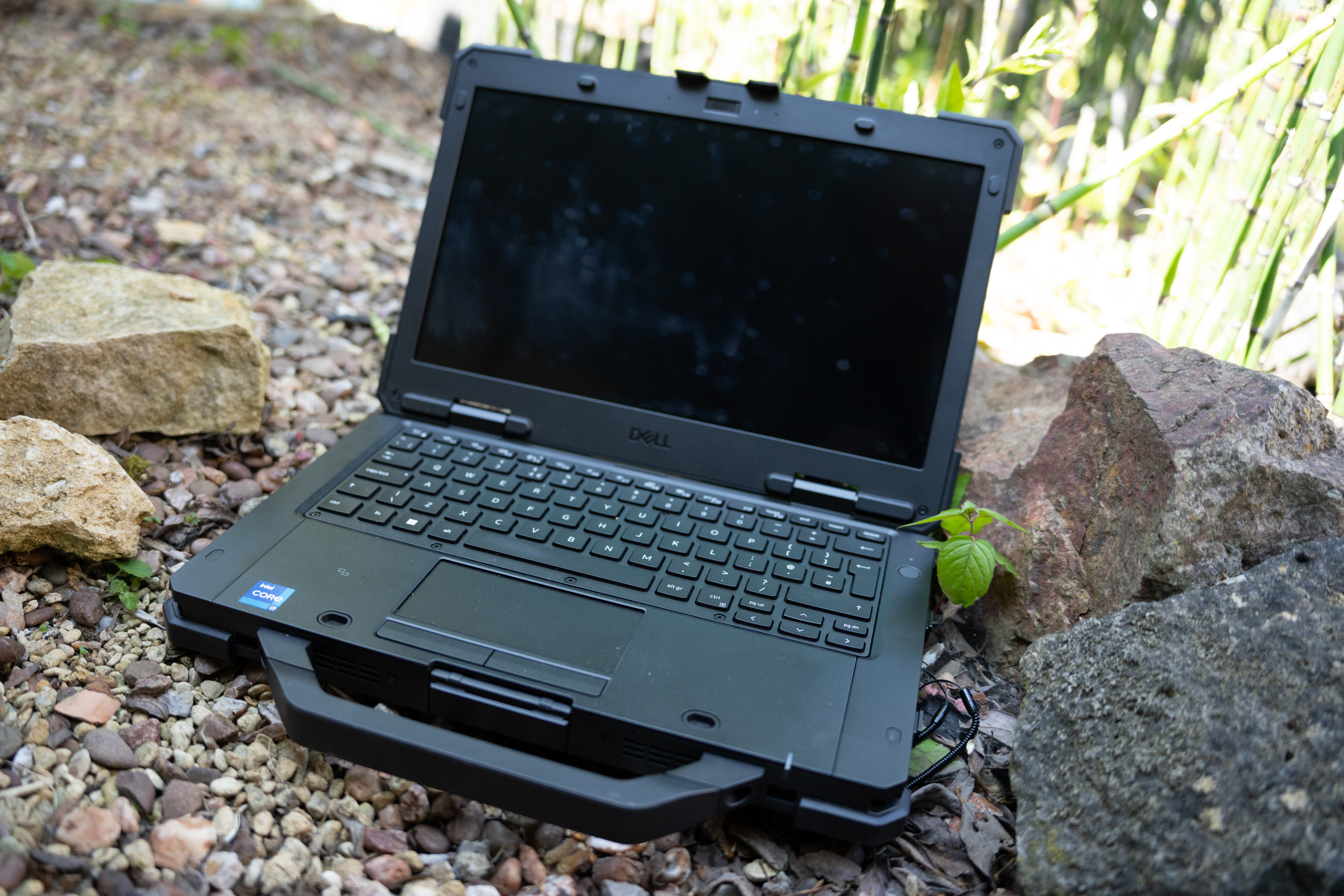
Dell Latitude 7330 Rugged Extreme review: Key specifications
| CPU: | Intel Core i7 1165-G7 |
| RAM: | 16GB |
| GPU: | Intel Xe integrated |
| Storage: | 1TB |
| Connectivity: | Thunderbolt 4, USB 3.2 Gen 2, ExpressCard/Smartcard (optional), Ethernet, MicroSD, Nano SIM, HDMI, VGA |
| Wireless: | Wi-Fi 6, Bluetooth, 5G |
| Dimensions: | 36.5 x 324 x 220mm |
| Weight: | 2.32kg |
Design and features
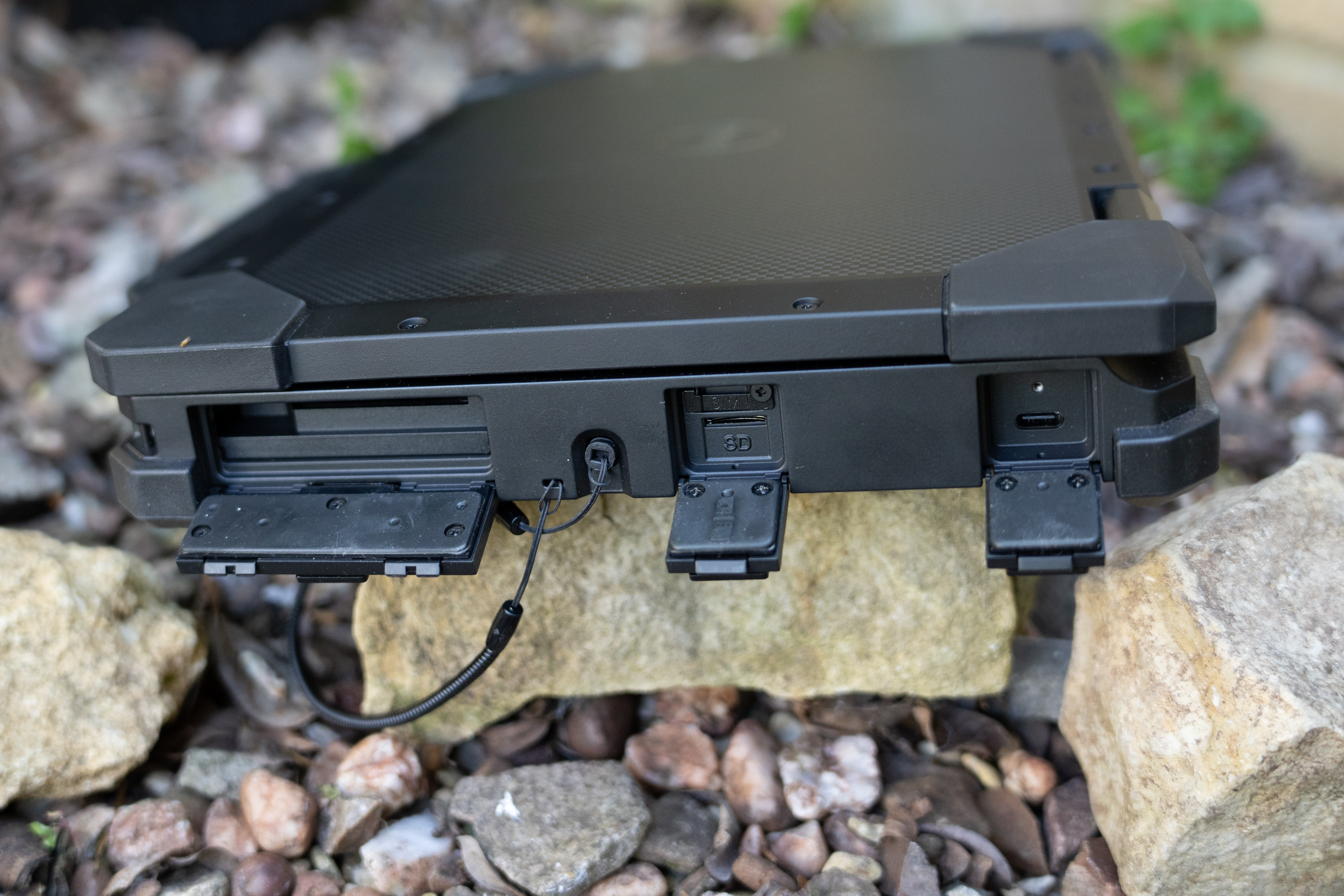
Dell’s Rugged Extreme laptop is black all over, with a white backlight behind the keyboard and a thick bezel around the screen. The overall aesthetic is chunky, with rubber armour on the corners and a catch to keep the screen closed. The hinge is stiffer than many other laptops – there's no chance of flipping this open while holding it in one hand – and all the ports are covered with rubber doors, each with a catch so they can be clicked shut and prevented from opening. There's even a slider over the webcam.
As a result, it’s hefty for a 13-inch laptop. The version we've been sent to review has an extra USB-C Thunderbolt port on the right-hand side, meaning there are three doors on the right, two on the back and two to the left. These cover things like an HDMI port, Micro SD card reader and SIM card slot in addition to the USB ports, but there's more to see underneath.
On the bottom of the laptop are doors that reveal the SSD (1TB in our review laptop, 256GB in the basic model) ready for replacement. There are (up to) two removable battery packs too, something that’s as rare on a laptop these days as an Express Card slot. Except it’s got one of those too, behind one of the doors on the left-hand side, though it’s optional.
The touchscreen can be used while wearing gloves, and there's a stylus secreted in a nook on the side of the chassis too. The stiff hinge makes it easier to use the touchscreen, as it’s less likely to fold over when you press on it.
The trackpad is small and rather unresponsive, pushing us to use the touchscreen where usually we'd move the pointer around. The pad reacts better to a firm press, but when you're pushing down this hard there's a fine line between movement and clicking. It’s also quite easy to accidentally trigger touch gestures and find yourself maximising a window you didn’t mean to, or opening unwanted new browser tabs.
The keyboard, by contrast, is quite nice, with the keys well separated and with enough travel and resistance for a good typing feel. When using the laptop on your lap the handle protrudes toward you and can get in the way, especially if you’re using the machine in close quarters, such as the seat of a car.
Performance and battery
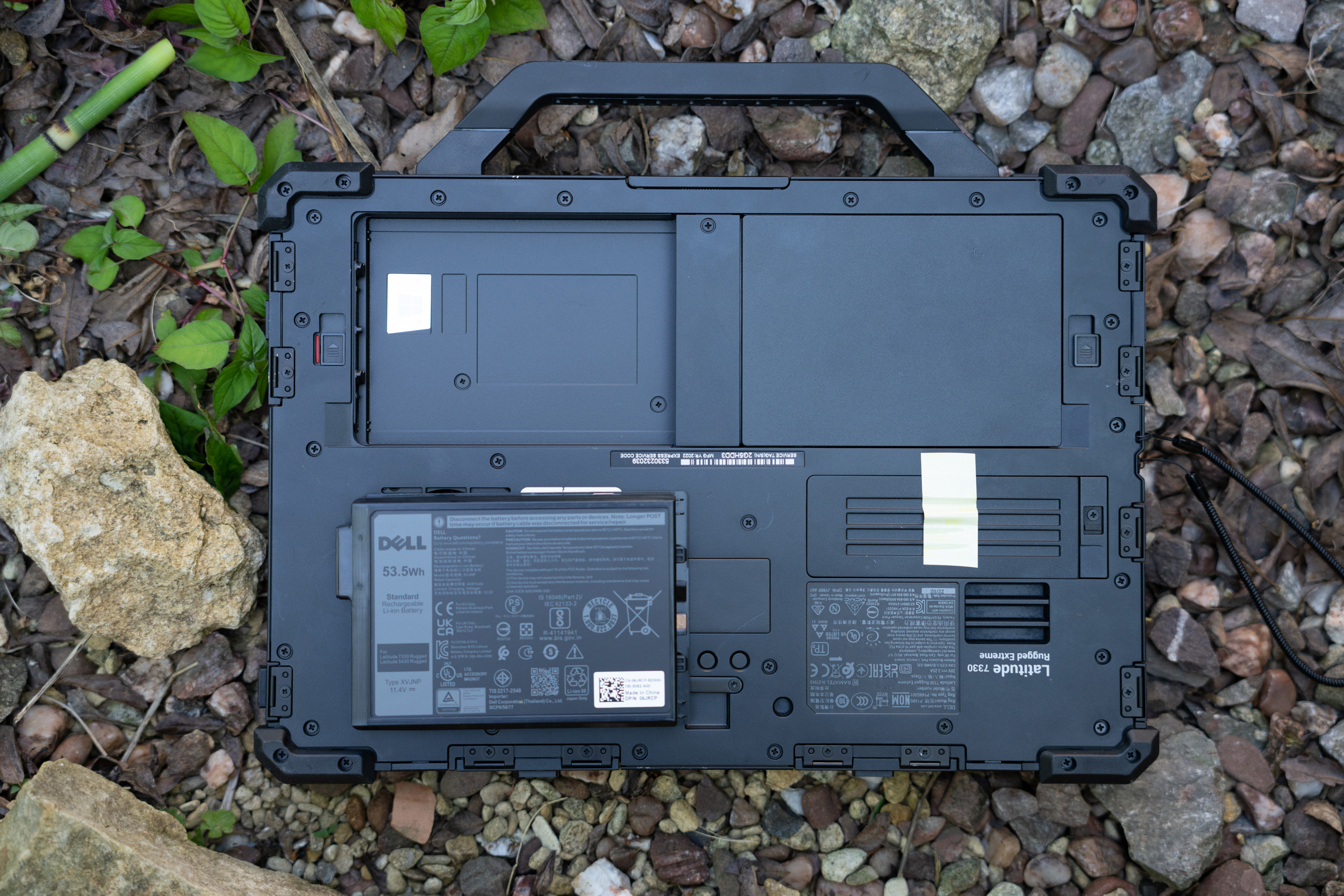
The model we’ve been sent to play with sports an Intel Core i7-1185G7 processor (i5s are also available) and 16GB of RAM, which is a reasonable spec even if the CPU is from Intel’s 11th generation, which came along in 2021. It zips along at a decent rate, boosting all the way to 4GHz if required, and starts up quickly too. It’s the four-core, eight-thread mobile version of the chip, naturally, rather than the eight-core H-series desktop i7 from the 11th generation, and as you’d expect comes up short in the multi-core benchmark as a result.
If there's one thing missing from the rugged Dell it’s a dedicated graphics processor. The G7 in the CPU name puts it at the top of the hierarchy for integrated Xe graphics performance, with 96 execution units, so it does a perfectly OK job of pushing the 1080p screen and providing some hardware acceleration in image and video editing apps. It’ll never be a gaming laptop, and was never designed to be.
The cooling fan doesn’t kick in very often, even when undergoing our benchmark tests, and thanks to the thicker external coating the laptop never gets uncomfortably hot against your lap. Battery life is reasonable, at around seven hours, but the laptop’s great strength is that the two cells can be popped out of the bottom of the machine and replaced with fresh ones, meaning that for an extra investment you can work for a long time away from a power socket.
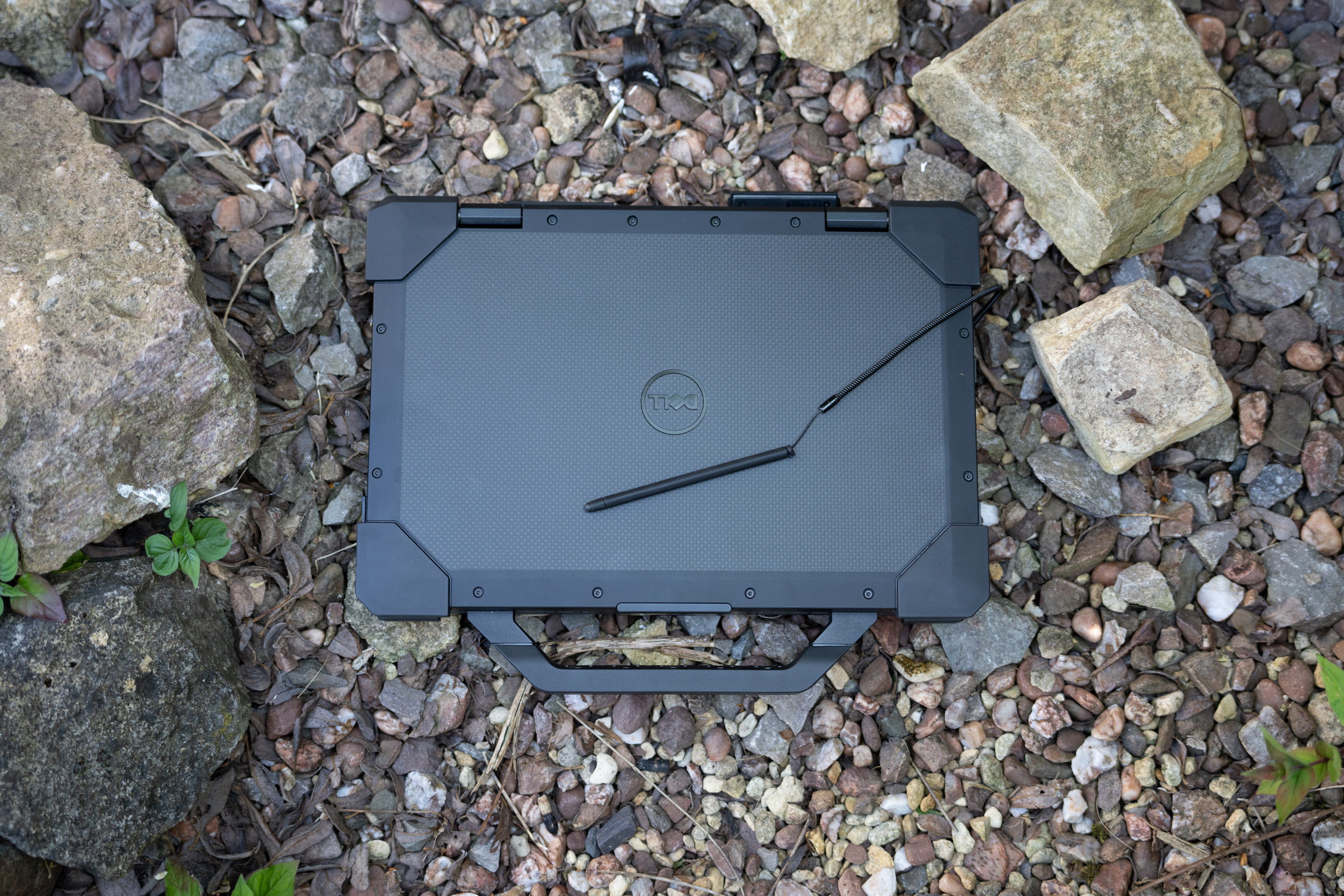
Benchmark scoring
| Geekbench 6: | CPU Single-core: 1,853; Multi-core: 5,695; GPU: 14,882 |
| Cinebench R23: | Single-core: 1,474; Multi-core: 5,329 |
| PCMark 10 Express: | 4,725 |
| Handbrake: | 12m 17s |
| Battery life: | 7h 14m |
Price
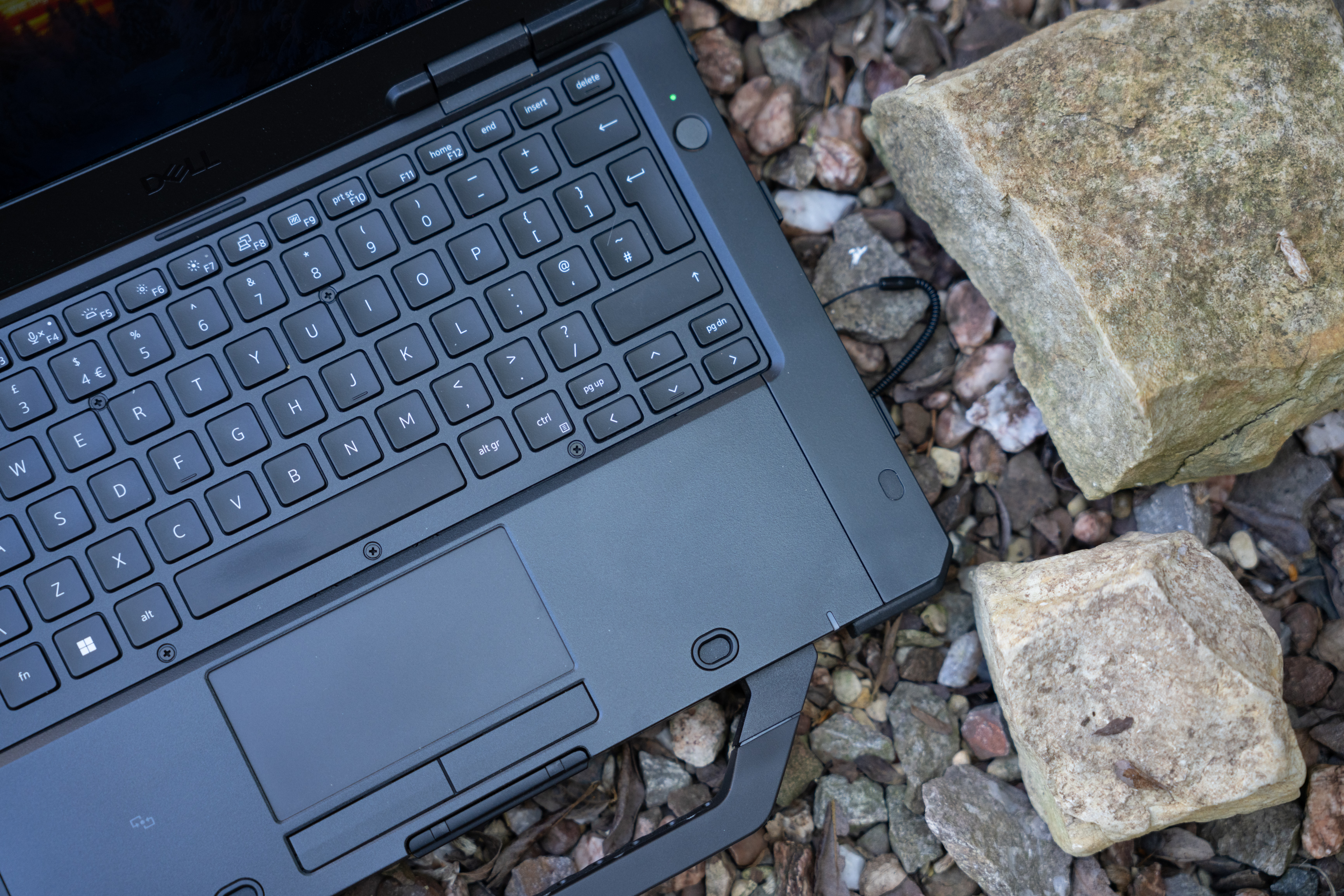
As a niche product full of additional features, you’d expect the price of the Dell Latitude Rugged Extreme to be high compared to non-toughened laptops, and indeed it is. The range starts north of £3,500 and goes from there as you add optional extras. An i7 13in touchscreen laptop with 16GB of RAM – Dell’s own XPS 13 2-in-1 for example, would normally be available for less than £1,000. You pay a lot for the seals and rubber armour.
That said, if you need an armoured laptop, then you need an armoured laptop, and no other computer will do. Panasonic’s 14-inch Toughbook 40, probably the closest rival to the Dell (but which has a slightly better IP rating of 66), goes for over £5,000 once you include VAT, so this kind of price is par for the course – though if you want a laptop for golf this isn’t the one. Bungee jumping is more its style.
Should I buy the Dell Latitude 7330 Rugged Extreme?
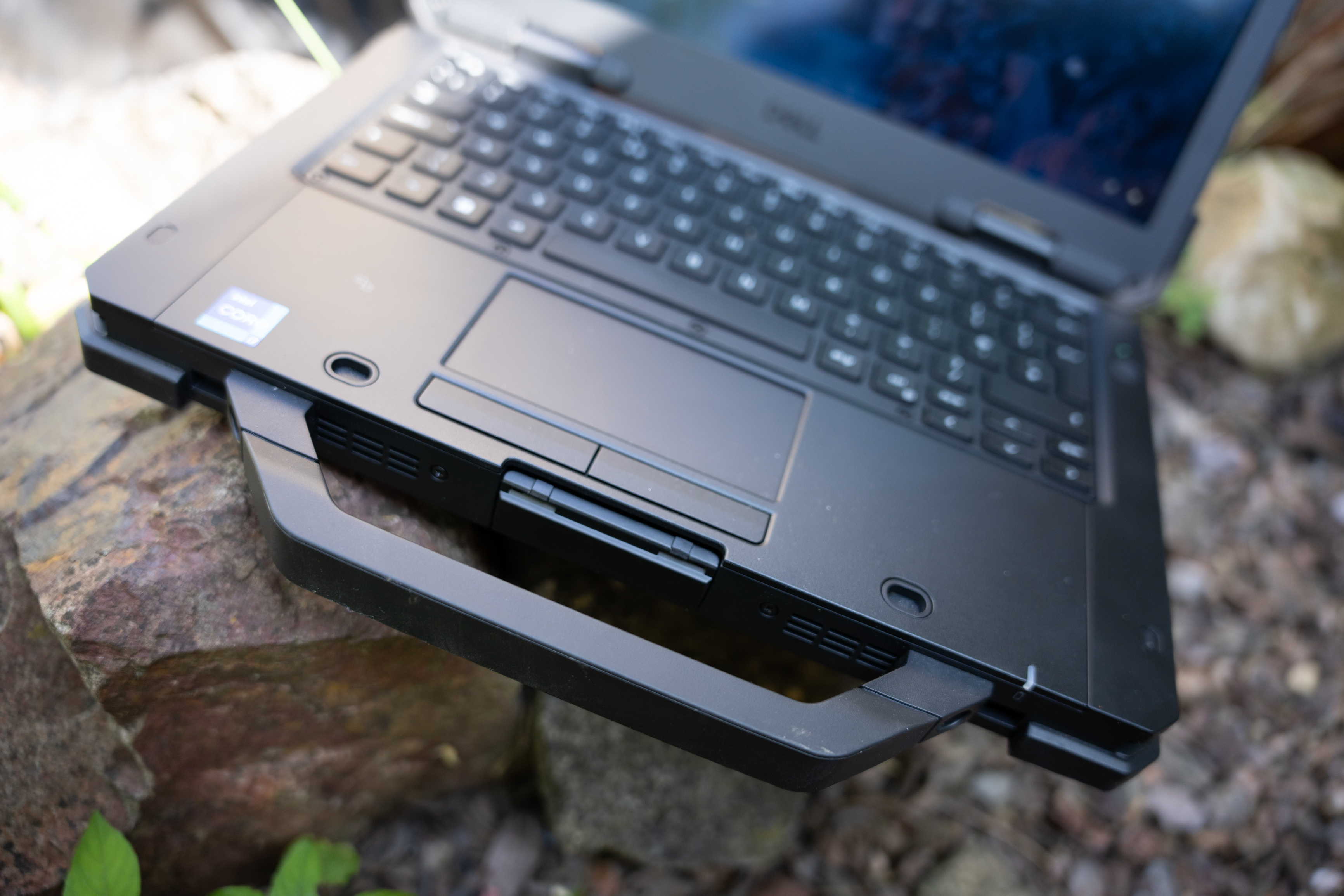
This is a specialised product, so the advice has to be to save your money and only buy one if you really need it. Nobody wants to be the person who wears combat boots and night-vision equipment in the office, or full camo to the library. However, this level of protection does have its uses, and anyone shooting photos or video in dusty or damp conditions could certainly find a use for it. Being thrown around in a vehicle isn’t good for computers either, so an armoured travel laptop that can survive such a trip could be a must-buy for adventurous creators.

Thank you for reading 5 articles this month* Join now for unlimited access
Enjoy your first month for just £1 / $1 / €1
*Read 5 free articles per month without a subscription

Join now for unlimited access
Try first month for just £1 / $1 / €1
out of 10
This isn’t a laptop for everybody, but for the few who really need i,t the 13-inch Dell Latitude 7330 Rugged Extreme will be the perfect tool for their situation. It’s armoured against impacts, has dust and water protection, and the removable battery and accessible SSD mean it has a degree of expandability and upgradability other laptops frequently don’t possess.

Ian Evenden has been a journalist for over 20 years, starting in the days of QuarkXpress 4 and Photoshop 5. He now mainly works in Creative Cloud and Google Docs, but can always find a use for a powerful laptop or two. When not sweating over page layout or photo editing, you can find him peering at the stars or growing vegetables.
